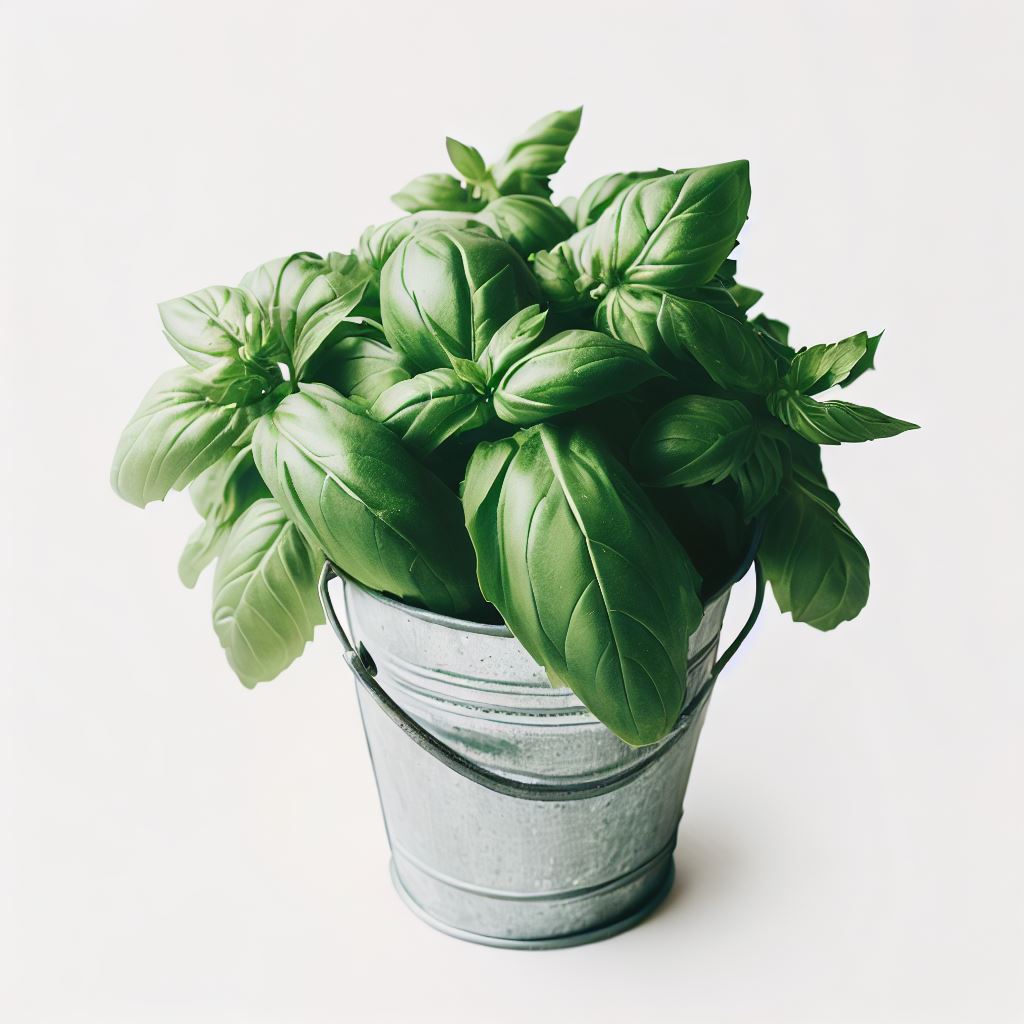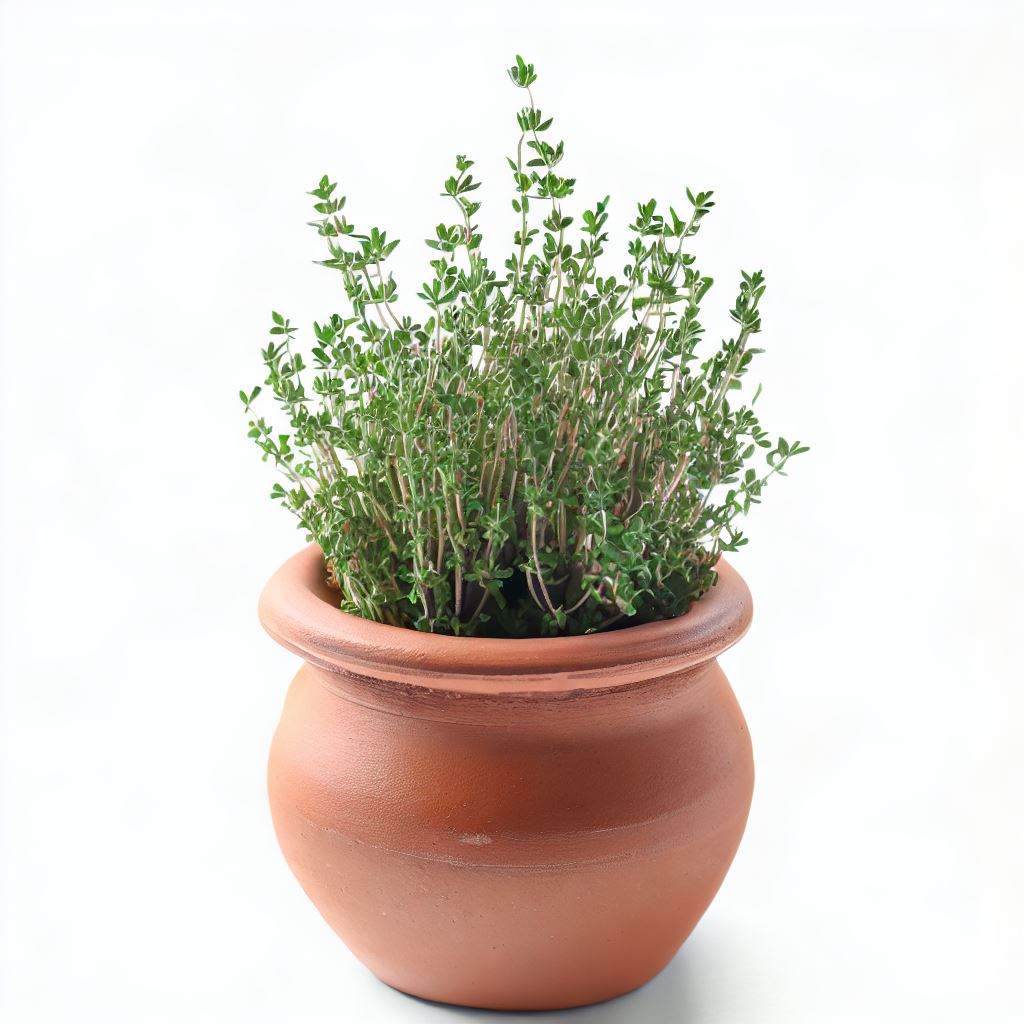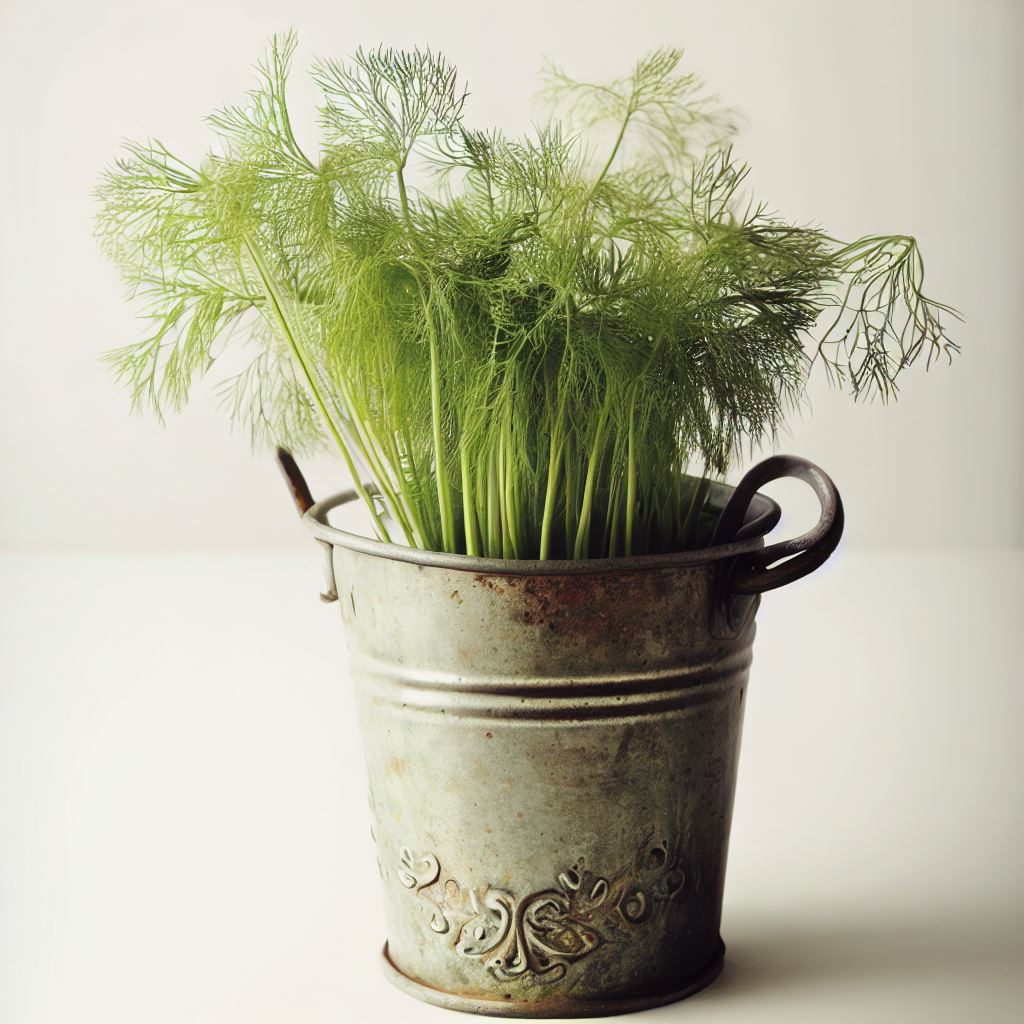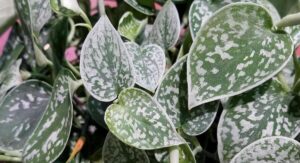
So, you want to start an indoor herb garden, but don’t know what herbs to choose? Growing your own fresh herbs at home is an extremely rewarding and enjoyable way to add flavor and texture to your cooking. Not only does it save you money compared to buying pre-packaged herbs from the store, but caring for living plants has been shown to reduce stress and promote physical and mental well-being.
In this comprehensive guide, we’ll break down everything you need to know to start successfully cultivating your favorite culinary herbs indoors.
We’ll also rate each herb on a scale from one to 10 based on how easy or challenging it is to grow as a beginner indoor gardener.
In this article
- 1 The Three Indoor Herb Garden Essentials
- 2 Worthy Additions
- 2.1 Oregano: The Mediterranean Marvel
- 2.2 Thyme: A Timeless Favorite
- 2.3 Parsley: The Versatile Classic
- 2.4 Chives: The Delicate Allium
- 2.5 Sage: The Wise Herb
- 2.6 Lavender: The Fragrant Wonder
- 2.7 Chamomile: The Calming Herb
- 2.8 Cilantro: The Culinary Star
- 2.9 Rocket: The Peppery Leaf
- 2.10 Fennel: The Anise Aroma
- 2.11 Dill: The Herb of Freshness
- 2.12 Arugula: The Peppery Green
- 3 Expert Tips for a Flourishing Herb Garden
The Three Indoor Herb Garden Essentials
To create your own thriving indoor herb garden, you’ll need to understand the unique needs and characteristics of each herb. Let’s break down the essentials for successfully growing these kitchen herbs indoors.
Basil: The Royal Herb Reimagined

- Best Season for Planting: Spring or early summer is ideal for basil.
- Annual or Perennial: Basil is an annual herb.
- Container Size: A medium-sized pot with good drainage is suitable.
- Water Requirements: Keep the soil consistently moist but not waterlogged.
- Light and Temperature: Basil thrives in bright, indirect light and prefers temperatures between 70-75°F (21-24°C).
- Harvest and Pruning: Pinch off the leaves regularly to encourage bushy growth and prevent flowering.
- Companion Herbs: Basil pairs well with parsley, oregano, and thyme.
- Verdict: Basil is relatively easy to grow indoors, earning an 8/10 for its adaptability and versatility.
Rosemary: The Remembrance Herb Reimagined

- Best Season for Planting: Spring is the best time to plant rosemary.
- Annual or Perennial: Rosemary is a perennial herb.
- Container Size: Opt for a larger container with well-draining soil.
- Water Requirements: Allow the soil to dry out between waterings.
- Light and Temperature: Rosemary thrives in full sun and likes temperatures between 65-70°F (18-21°C).
- Harvest and Pruning: Prune rosemary regularly to encourage new growth and maintain its shape.
- Companion Herbs: Rosemary pairs well with sage and lavender.
- Verdict: Rosemary can be a bit finicky indoors, earning a 6/10 for its more demanding care requirements.
Mint: The Invigorating Herb Reimagined

- Best Season for Planting: Plant mint in the spring.
- Annual or Perennial: Mint is a perennial herb.
- Container Size: Mint is a prolific spreader, so use a deep container or separate pots for each plant.
- Water Requirements: Keep the soil consistently moist but not waterlogged.
- Light and Temperature: Mint thrives in partial shade and prefers temperatures between 60-70°F (15-21°C).
- Harvest and Pruning: Regularly harvest the top leaves to encourage bushy growth.
- Companion Herbs: Mint is excellent alongside basil, chives, and parsley.
- Verdict: Mint is one of the easiest herbs to grow indoors, earning a 9/10 for its adaptability and low maintenance.
With these insights, you’re well on your way to creating a thriving indoor herb garden. Remember to tailor your care routine to each herb’s specific requirements for the best results.
Worthy Additions
Oregano: The Mediterranean Marvel

Oregano, often associated with Mediterranean cuisine, is a versatile herb with a rich history. This herb is believed to have originated in Greece and has been cherished for its aromatic leaves, which boast both culinary and medicinal uses.
- Best Season for Planting: Spring or early summer is ideal for oregano.
- Annual or Perennial: Oregano is a perennial herb.
- Container Size: Choose a medium-sized container with well-draining soil.
- Water Requirements: Keep the soil moderately moist, allowing the top inch to dry between waterings.
- Light and Temperature: Oregano loves sunlight and thrives in temperatures between 70-85°F (21-29°C).
- Harvest and Pruning: Prune oregano regularly to encourage bushy growth and prevent legginess.
- Companion Herbs: Oregano pairs well with basil and thyme.
- Verdict: Oregano is moderately easy to grow indoors, earning a 7/10 for its adaptability and flavor contribution.
Thyme: A Timeless Favorite

Thyme, a herb steeped in history and tradition, is celebrated for its aromatic leaves that elevate a wide range of dishes. This herb, with its roots in the Mediterranean, has been cherished for centuries for its culinary and medicinal properties.
- Best Season for Planting: Spring is the best time to plant thyme.
- Annual or Perennial: Thyme is a perennial herb.
- Container Size: Choose a medium-sized container with well-draining soil.
- Water Requirements: Allow the soil to dry slightly between waterings.
- Light and Temperature: Thyme thrives in full sun and prefers temperatures between 60-75°F (15-24°C).
- Harvest and Pruning: Regularly trim thyme to encourage bushy growth and prevent legginess.
- Companion Herbs: Thyme pairs well with rosemary and sage.
- Verdict: Thyme is relatively easy to grow indoors, earning an 8/10 for its adaptability and robust flavor.
Parsley: The Versatile Classic

Parsley, often relegated to a garnish, is a versatile herb with a history dating back to ancient Greece. Beyond its decorative role, parsley offers a burst of fresh flavor and is a nutritional powerhouse.
- Best Season for Planting: Spring or fall is ideal for parsley.
- Annual or Perennial: Parsley is a biennial herb.
- Container Size: Opt for a medium-sized container with well-draining soil.
- Water Requirements: Keep the soil consistently moist but not waterlogged.
- Light and Temperature: Parsley prefers bright, indirect light and temperatures between 50-75°F (10-24°C).
- Harvest and Pruning: Regularly trim parsley to encourage fresh growth.
- Companion Herbs: Parsley is an excellent companion for basil and chives.
- Verdict: Parsley is a straightforward herb to grow indoors, earning a 9/10 for its adaptability and versatility.
With oregano, thyme, and parsley joining your indoor herb garden, you’re poised to create culinary masterpieces infused with an array of flavors and aromas.
Chives: The Delicate Allium

Chives, with their mild onion flavor, are a delightful addition to any herb garden. They belong to the allium family, which includes onions, garlic, and leeks.
- Best Season for Planting: Spring or early summer is ideal for chives.
- Annual or Perennial: Chives are perennial herbs.
- Container Size: Choose a medium-sized pot with well-draining soil.
- Water Requirements: Keep the soil consistently moist but not waterlogged.
- Light and Temperature: Chives thrive in bright, indirect light and prefer temperatures between 60-70°F (15-21°C).
- Harvest and Pruning: Trim chives regularly to encourage fresh growth.
- Companion Herbs: Chives pair well with parsley and basil.
- Verdict: Chives are exceptionally easy to grow indoors, earning a 9/10 for their adaptability and versatility.
Sage: The Wise Herb

Sage, renowned for its earthy flavor, has a storied history dating back to ancient civilizations. It’s not just a culinary herb but also holds cultural significance.
- Best Season for Planting: Spring is the best time to plant sage.
- Annual or Perennial: Sage is a perennial herb.
- Container Size: Opt for a medium-sized container with well-draining soil.
- Water Requirements: Allow the soil to dry slightly between waterings.
- Light and Temperature: Sage thrives in full sun and prefers temperatures between 65-70°F (18-21°C).
- Harvest and Pruning: Prune sage regularly to encourage bushy growth.
- Companion Herbs: Sage pairs well with rosemary and thyme.
- Verdict: Sage is moderately easy to grow indoors, earning a 7/10 for its adaptability and robust flavor.
Lavender: The Fragrant Wonder

Lavender, celebrated for its enchanting aroma, is a herb that transcends culinary use. Its soothing scent and versatile applications make it a standout in any herb garden
- Best Season for Planting: Spring or early summer is ideal for lavender.
- Annual or Perennial: Lavender is a perennial herb.
- Container Size: Choose a medium-sized pot with well-draining, sandy soil.
- Water Requirements: Allow the soil to dry out between waterings.
- Light and Temperature: Lavender thrives in full sun and prefers temperatures between 70-80°F (21-27°C).
- Harvest and Pruning: Prune lavender to maintain its shape and encourage new growth.
- Companion Herbs: Lavender pairs well with rosemary and thyme.
- Verdict: Lavender can be moderately challenging to grow indoors, earning 6/10 for its specific care requirements.
Chamomile: The Calming Herb

Chamomile, often enjoyed as a soothing tea, is known for its calming properties and delicate, daisy-like flowers. This herb has a history steeped in herbal remedies and relaxation. Here are some intriguing facts about chamomile:
- Best Season for Planting: Spring is the best time to plant chamomile.
- Annual or Perennial: Chamomile is an annual herb.
- Container Size: Opt for a medium-sized container with well-draining soil.
- Water Requirements: Keep the soil consistently moist but not waterlogged.
- Light and Temperature: Chamomile prefers bright, indirect light and temperatures between 60-70°F (15-21°C).
- Harvest and Pruning: Harvest chamomile flowers as they bloom for tea-making.
- Companion Herbs: Chamomile pairs well with mint and lemon balm.
- Verdict: Chamomile is straightforward to grow indoors, earning 8/10 for its adaptability and calming qualities.
Cilantro: The Culinary Star

Cilantro, with its bright and citrusy flavor, is a staple in many global cuisines, from Mexican to Indian. It’s a polarizing herb – some adore its unique taste, while others find it soapy. Here are some noteworthy facts about cilantro:
- Best Season for Planting: Cilantro prefers cooler weather, so plant it in early spring or late summer.
- Annual or Perennial: Cilantro is an annual herb.
- Container Size: Choose a medium-sized pot with well-draining soil.
- Water Requirements: Keep the soil consistently moist, especially during hot weather.
- Light and Temperature: Cilantro thrives in partial shade and prefers temperatures between 50-75°F (10-24°C).
- Harvest and Pruning: Harvest cilantro leaves and stems as needed for culinary use.
- Companion Herbs: Cilantro pairs well with basil and mint.
- Verdict: Cilantro can be moderately challenging to grow indoors due to its tendency to bolt in warm weather, earning 7/10 for its specific care requirements.
With chives, sage, lavender, chamomile, and cilantro joining your indoor herb garden, you’re poised to create culinary masterpieces infused with an array of flavors and aromas.
Remember that each herb has its unique needs, so adjust your care routine accordingly for a thriving garden.
Rocket: The Peppery Leaf

Rocket, also known as arugula in some regions, is celebrated for its peppery, slightly nutty flavor. It’s a versatile herb often used in salads, sandwiches, and as a garnish.
- Best Season for Planting: Rocket thrives in cool weather, making spring and fall the ideal planting seasons.
- Annual or Perennial: Rocket is an annual herb.
- Container Size: Opt for a medium-sized container with well-draining soil.
- Water Requirements: Keep the soil consistently moist but not waterlogged.
- Light and Temperature: Rocket prefers partial shade and cooler temperatures between 50-68°F (10-20°C).
- Harvest and Pruning: Harvest rocket leaves regularly, starting when they’re young, to enjoy their best flavor and texture.
- Companion Herbs: Rocket pairs well with basil and chervil.
- Verdict: Rocket is exceptionally easy to grow indoors, earning 9/10 for its adaptability and quick growth.
Fennel: The Anise Aroma

Fennel is a herb with a distinct anise or licorice flavor. It’s prized for its aromatic seeds, crunchy bulb, and feathery fronds, all of which are used in various culinary applications.
- Best Season for Planting: Spring and early summer are ideal for planting fennel.
- Annual or Perennial: Fennel is a perennial herb.
- Container Size: Choose a larger pot to accommodate the fennel’s root system.
- Water Requirements: Keep the soil consistently moist but not waterlogged.
- Light and Temperature: Fennel prefers full sun and temperatures between 60-70°F (15-21°C).
- Harvest and Pruning: Harvest fennel fronds and seeds as needed for culinary use. Trim dead or yellowing fronds.
- Companion Herbs: Fennel pairs well with dill and parsley.
- Verdict: Fennel can be moderately easy to grow indoors, earning 7/10 for its adaptability and distinct flavor.
Dill: The Herb of Freshness

Dill is renowned for its fresh, grassy flavor with a hint of anise. It’s a classic herb in pickles and seafood dishes but can be used to add a burst of flavor to various recipes.
- Best Season for Planting: Dill thrives in warm weather, making late spring and early summer the best planting seasons.
- Annual or Perennial: Dill is an annual herb.
- Container Size: Opt for a medium-sized container with well-draining soil.
- Water Requirements: Keep the soil consistently moist.
- Light and Temperature: Dill prefers full sun and temperatures between 60-75°F (15-24°C).
- Harvest and Pruning: Harvest dill leaves regularly to promote new growth. Prune away yellowing or dead stems.
- Companion Herbs: Dill pairs well with basil and chives.
- Verdict: Dill is exceptionally easy to grow indoors, earning a 9/10 for its adaptability and rapid growth.
Arugula: The Peppery Green

Arugula, also known as rocket in some regions, is prized for its peppery and slightly nutty flavor. It’s a versatile green used in salads, sandwiches, and as a pizza topping.
- Best Season for Planting: Arugula thrives in cooler weather, making spring and fall the ideal planting seasons.
- Annual or Perennial: Arugula is an annual herb.
- Container Size: Choose a medium-sized container with well-draining soil.
- Water Requirements: Keep the soil consistently moist but not waterlogged.
- Light and Temperature: Arugula prefers partial shade and cooler temperatures between 50-68°F (10-20°C).
- Harvest and Pruning: Harvest young arugula leaves regularly for the best flavor and texture.
- Companion Herbs: Arugula pairs well with parsley and basil.
- Verdict: Arugula is exceptionally easy to grow indoors, earning 9/10 for its adaptability and quick growth.
With these new additions of rocket, fennel, dill, and arugula to your indoor herb garden, your culinary creations are sure to reach new heights of flavor and freshness. Each of these herbs offers a unique taste and texture, making them delightful additions to your favorite dishes.
Expert Tips for a Flourishing Herb Garden
Use the Right Potting Mix
Select a high-quality potting mix that provides good drainage and aeration. Most herbs prefer slightly acidic soil with excellent water-holding capacity.
Proper Watering Technique
Overwatering is a common pitfall. Water your herbs when the top inch of soil feels dry. Use a saucer under the pots to catch excess water, preventing root rot.
Provide Adequate Light
Place your herbs in a location where they receive adequate sunlight. South-facing windowsills are ideal. If natural light is limited, consider using grow lights to supplement.
Pruning and Harvesting
Regularly prune your herbs to encourage bushy growth and prevent legginess. Harvest regularly to enjoy fresh flavors and promote new growth.
Pest Management
Keep an eye out for common pests like aphids and spider mites. Use organic pest control methods to protect your herbs.
Fertilization
Herbs are not heavy feeders, but they benefit from occasional fertilization. Use a balanced, water-soluble fertilizer diluted to half strength.
Companion Planting
Pair herbs with companion plants that deter pests and enhance growth. For example, marigolds can help repel aphids and nematodes.
Rotate Your Herbs
Rotate your herb pots every few weeks to ensure even growth and prevent one side from leaning towards the light source.
Remember, every journey starts with a single step. Start small with a few herbs that pique your interest, and as your confidence grows, you can expand your indoor garden to include a variety of herbs.
Whether you have a sunny windowsill, a balcony, or limited space, there’s always room for an indoor herb garden.
So, why wait? The time to start your indoor herb garden is now!







